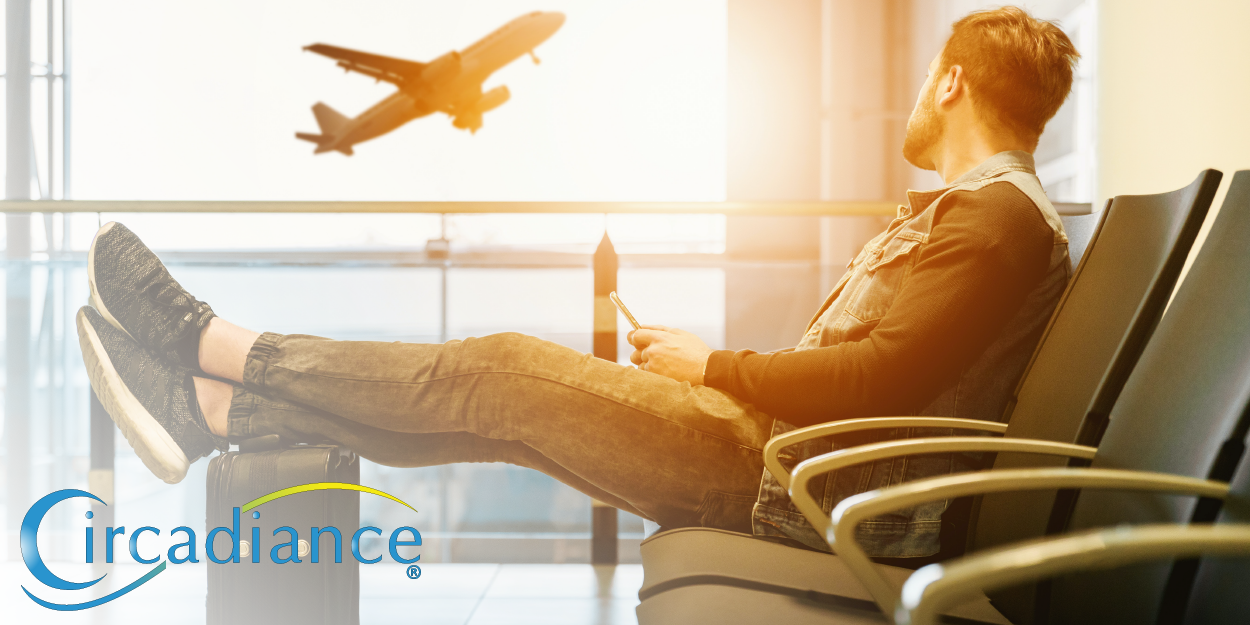PAP patients have many things to overcome when it comes to traveling with their devices. This blog will help you to see that getting your therapy while on the move isn't as difficult as you might think.
Portable PAP Options
There are a few PAP devices currently on the market that are specifically designed as “portable” devices. They have the advantages of being small, designed for travel, and feature a variety of battery and other charging options (such as solar panels). Two popular devices—Transcend by Somnetics and the Z1 by Human Design Medical—are available in both set pressure and auto-titrating (APAP) models. They have the additional advantage of both having options for heat moisture exchange systems to preserve exhaled moisture.
Pairing SleepWeaver® Skin Friendly® PAP masks with small, portable PAP machines like these allows you to be compliant with therapy while traveling without taking up too much space during your trip. SleepWeaver masks are convenient and easy to pack for travel. They all weigh 2 oz or less and can simply be folded up and placed in your carry-on bag for ease of use while you are away. The cloth material and comfortable headgear also ensure no strap lines on your face when greeting friends and family after a long journey.
Tips for Battery Operation
Going camping, traveling by RV, or flying can mean running your PAP machine on battery. Battery power systems can be set up for bilevel and ASV devices, in addition to the more common CPAP and APAP devices. For road trips in a personal vehicle, powering your PAP via battery from an in-vehicle 12-V outlet is an option. The two portable PAP devices mentioned above come ready to run off 12-V in-vehicle outlets, and many other models now have 12-V power adapters available. Check with the manufacturer for the exact specifications for an inverter and to determine the needed watt capacity. Also, find out from the manufacturer if the device needs pure sine wave power or not. Most inverters sold create modified sine wave power.
It's also not a bad idea to keep a battery ready at home in case of a power outage!
Dealing with Cold Weather and High Altitude
Going camping with PAP therapy may involve the mountains and/or cold weather. A ski trip can mean sleeping in a ski lodge that is located more than 10,000 feet above sea level. Many PAP devices will automatically adjust for altitude up to 7,500 feet (which is the normal, adjusted pressurization of an airliner); some will manually adjust up to 9,000 feet. Be sure to check your machine before you leave for your trip!
Another potential issue to consider when camping is PAP-induced hypothermia. When a person sleeps in temperatures below 45oF, the air circulated through the device can overwhelm the body’s ability to warm it, resulting in a lowering of core body temperature. Using a heated tube and a machine that warms the air can help, but you still need to bundle up and be smart about keeping your body warm through the night.
Flying with PAP
Since PAP is a medical device, it is exempt from carry-on baggage restrictions for most airlines. Be sure to check in advance so you aren't forced to ditch your machine at the airport! It will go through special screening at the TSA checkpoint prior to being allowed on board. Most travelers with PAP prefer to take the device as a carry-on item, rather than risk losing it in checked baggage. TSA Special Procedures outlines the exemptions for medically required liquids. This will give you guidance about whether or not you pack distilled water, used in many machines, along for your trip.
Using PAP in-flight will require additional research on the particular airline. Some airlines require 48 hours of advance notice. If you do not have a portable PAP with a battery, you will need to discuss the power options available and the seating requirements of the airplane. A copy of your doctor’s prescription and a copy of the FAA approval letter for in-flight use of your make and model PAP may be needed. These letters are available through PAP manufacturers’ websites. If your device has it, operate in "flight mode" to minimize noise and disable functions like compliance communication or heating (which draws additional power).
Additional Resources
Just like at home, your PAP mask and hose will need to be cleaned. Be sure to maintain your device while traveling and let your humidification tank dry out each day to avoid moisture-related hygiene issues.
Long-haul truckers who require PAP therapy have an extra set of hurdles to maintain compliance while on the road. If you're a trucker, we suggest you heed Dr. John's sleep advice and check out his website.
With all of the stress around traveling in today’s world, it's nice to have a medical device that you can rely on and easily bring with you. If you're traveling this holiday season, be sure to put SleepWeaver on your packing list!
Traveling with PAP doesn't have to be difficult. Tell us your travel suggestions for other PAP patients in the comments below! 👇
Reference: Stanton, B. Traveling with CPAP-Yes You Can. Sleep Review. Retrieved from: http://www.sleepreviewmag.com/2016/07/traveling-cpap-yes/





